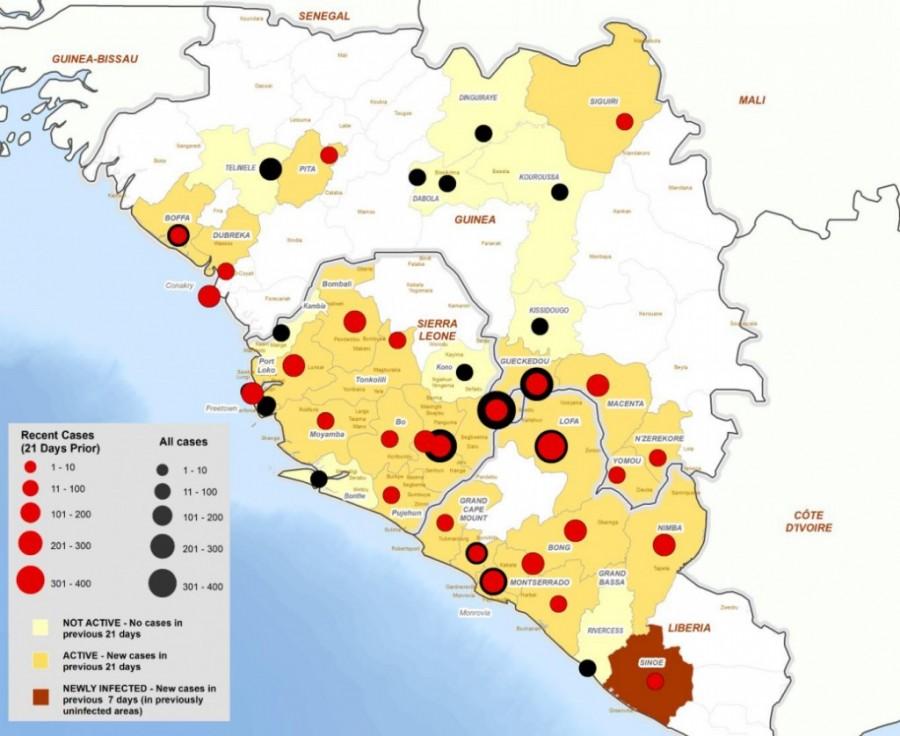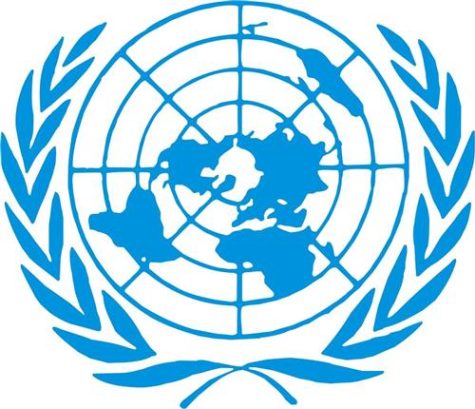Ebola: A Threat to West Africa & The World
This map from the World Health Organization shows the location of cases throughout the countries with the most intense Ebola transmission, differentiating the number of cases to date in each area, and the number occurring within the past 21 days, which corresponds to the incubation period for the virus.
September 28, 2014
In densely populated, undeveloped countries, where large numbers of people interact with each other on a daily basis, there is a huge opportunity for a virus to spread. Think about the cold and flu season here at school, and how quickly viruses spread amongst the students. Imagine the population in West Africa where basic medical supplies are in short supply, and many hospitals don’t have running water and soap. The Ebola outbreak in West Africa is the largest since the virus was first discovered in 1976. Many Americans really don’t understand the nature of the virus, and the news is just starting to report how deadly a threat the virus is.
The Ebola virus is severe and often fatal to humans. It was initially transmitted to humans from wild animals. At this stage, the virus is being transmitted among the human population of West Africa through bodily fluids such as blood, saliva, and urine. Symptoms of the Ebola virus include weakness, fever, aches, diarrhea, vomiting, and stomach pain. In addition, symptoms that also present are rash, chest pain, sore throat and difficulty breathing. Typically symptoms appear 8-10 days after exposure to the virus; however, the incubation period can be up to 21 days. According to the World Health Organization, “There is no specific treatment or vaccine and the fatality rate can be up to 90%. To date 5,500 people have been infected and over 2,500 have died from the virus.” Currently, scientists are working on two potential vaccines, but they are still undergoing evaluation. The only treatment currently available is to hydrate the body and to allow the body’s immune system to fight the disease.
Unfortunately, many of the people who are infected are health care workers. Three Americans made the news recently – and fortunately for them – they were brought back to the U.S. and are now getting the best of care. Experts predict that the Ebola pandemic will rage on in West Africa for another 12 to 18 months, with 20,000 cases predicted.
Many countries, including the United States, are sending supplies, equipment, and manpower. As the death toll continues to rise, we can only hope that the world comes together to help alleviate the suffering and contain the deadly Ebola virus.










